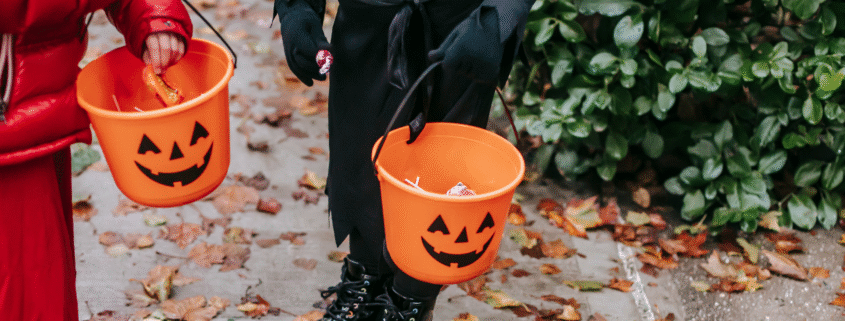Halloween is a fun-filled night with costumes, decorations, candy, family, and friends. But for children with communication differences, trick-or-treating can bring extra challenges. Greeting adults at their door, answering questions, and stating “Happy Halloween” might feel stressful and overwhelming. With a little creativity and preparation, we can make Halloween positive and inclusive for every child!
Ideas on how to tailor a variety of Augmentative and Alternative Communication (AAC) devices to fit your child’s needs during trick-or-treating:
- High-tech speech output device. Add a page to your child’s device specifically for Halloween and trick-or-treating. Include phrases such as “trick or treat!,” “Happy Halloween!”, “I am an *insert costume*,” and other functional phrases and greetings. Does your neighborhood require jokes for candy? Include a couple joke options for your child to pick from!
- Recordable answer buzzers. Purchase a buzzer and record yourself saying “Happy Halloween” or “trick-or-treat”. When your child goes up to a neighbor’s door, they can hit the buzzer and wish them a Happy Halloween! You can use one buzzer or multiple, depending on your child’s preference and ability.
- Communication cards. Create cards that are fun and decorative for your child to hand to neighbors as a greeting!
- Communication board. Add visuals for common phrases, emotions, costumes, and greetings related to Halloween. This can be attached to a lanyard or to a candy bag for easy access.
- Social script. Add quick phrases to a sheet of paper for your child to read off of.
No matter which form of AAC is best for your child, here are a few important things to remember:
- Practice. Practicing with their AAC at home before trick-or-treating will help ease some of the stress that comes with doing something new.
- Accessible. Keep their AAC within arms reach. For verbal communicators, communication is always right at our fingertips (or in this case, our lips). We want these alternative forms of communication just as accessible for our children with communication differences.
- Pace. Follow their lead. Communication can be overwhelming, so if your child is ready to go home early, that is ok! Listen to them and look for visual cues that they are all done.
- Celebrate! Communication is hard, celebrate every interaction your child makes.
Trick-or-treating is about more than just candy. It is about relationships, belonging, and fun. With the right support, children with communication differences can fully join in, in their unique way. By accepting and utilizing low-tech, mid-tech, and high-tech AAC, families can make Halloween accessible and a night to remember!
Other blogs:



